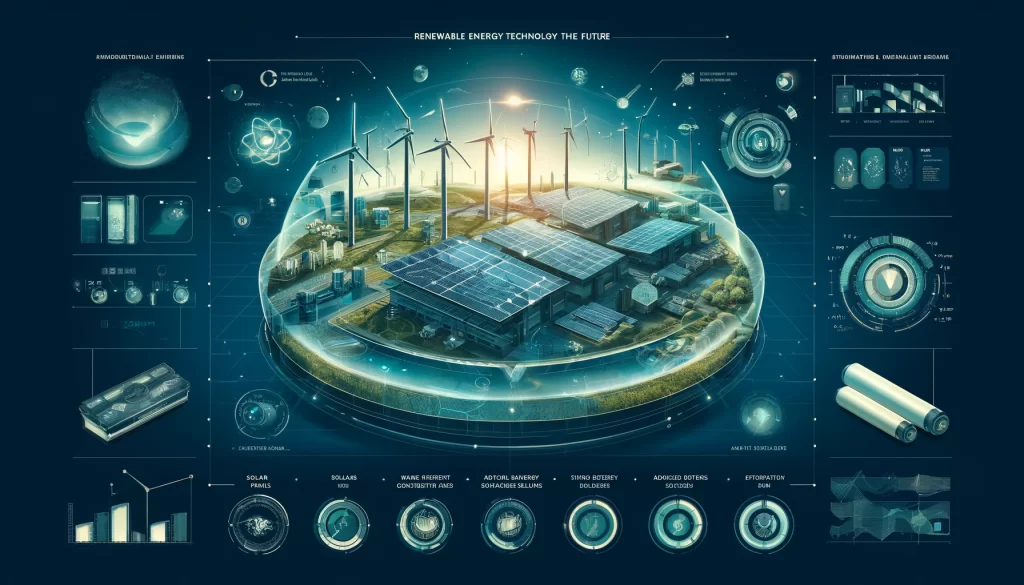The trajectory of renewable energy technology is a compelling narrative of innovation, driven by the urgent need for sustainable energy solutions. As global energy demands escalate and environmental concerns deepen, the push towards renewable resources is not just a trend but a fundamental shift in our energy infrastructure. This blog post delves into the future of renewable energy technologies, highlighting groundbreaking advancements and the potential impacts on our world.
The Current Landscape of Renewable Energy
Renewable energy sources like solar, wind, hydropower, and geothermal have made significant strides in the last decade. These technologies are crucial in combating climate change by reducing reliance on fossil fuels and lowering carbon emissions. As we move into 2024 and beyond, these technologies are set to evolve from niche to necessary, becoming more efficient, cost-effective, and widely adopted.
Solar Power: Brightening the Future
Solar energy technology is undergoing rapid advancements that promise to make solar power more efficient and more accessible than ever before.
- High-Efficiency Solar Panels: Researchers are developing solar cells with significantly higher efficiency rates, reducing the space needed for panels and increasing their applicability in urban environments.
- Building-Integrated Photovoltaics (BIPV): These systems integrate photovoltaics into building materials, such as windows and facades, seamlessly combining energy generation with architectural aesthetics.
Wind Energy: Catching Stronger Winds
Wind energy continues to expand its reach and efficiency through technological innovations and offshore wind development.
- Larger Turbine Blades: As blade technology advances, newer turbines are capable of capturing wind energy at lower wind speeds, increasing their efficiency and geographic viability.
- Floating Wind Farms: These allow for wind turbines to be installed in deep waters, vastly increasing the potential locations for offshore wind farms and reducing visual impacts.
Hydropower and Beyond: Making Waves with Water
While hydropower is a well-established source of renewable energy, new technologies are making it even more sustainable and less intrusive.
- Eco-Friendly Designs: Innovations in turbine design are reducing environmental impacts on aquatic ecosystems, making hydropower a greener option.
- Wave and Tidal Energy: Advances in capturing the energy of ocean waves and tidal flows are promising to unlock vast new resources of renewable energy.
Geothermal Energy: Tapping Earth’s Heat
Geothermal energy is set for a resurgence with new drilling technologies that make it more accessible and less costly.
- Enhanced Geothermal Systems (EGS): These systems, which involve drilling into the earth to access heat from dry rocks, could dramatically increase the potential for geothermal energy.
The Integration Challenge: Smart Grids and Storage
The integration of various forms of renewable energy into a cohesive system presents significant challenges but also opportunities for innovation.
- Smart Grid Technology: Modern grids equipped with sensors and smart meters can better manage the variability and distribution of renewable energy.
- Advanced Energy Storage: Technologies like battery storage systems and other forms of energy storage are crucial in balancing supply and demand and ensuring the reliability of renewable sources.

Looking Ahead: The Impact of Renewable Energy Tech
The future impact of renewable energy technologies extends beyond environmental benefits, influencing global politics, economies, and societies.
- Energy Independence: Countries can reduce their dependence on imported fossil fuels, enhancing their energy security and political autonomy.
- Economic Growth: The renewable energy sector is expected to continue its rapid growth, contributing to job creation and economic development.
Conclusion
Exploring the future of renewable energy tech reveals a landscape rich with opportunities for innovation and growth. As these technologies advance, they promise to play a pivotal role in shaping a sustainable and prosperous global energy future.

